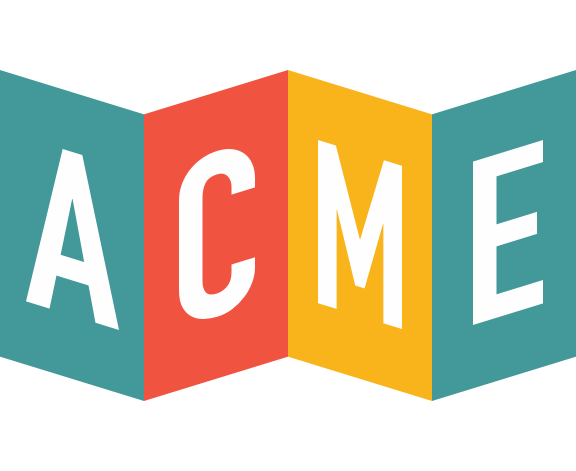
How to Retain Your Best Cultural Institution Employees
December 17, 2019
According to a survey in Leaving the Museum Field by museum professionals Sarah Erdman, Marieke Van Damme, Claudia Ocello and Dawn Estabrooks Salerno, most museum workers chose to work in this field because of their love for museums and/or the content area in which they work.
Cultural institutions are dependent upon this innate passion to help buoy day-to-day operations and interactions with guests. It is this passion that enthuses ticket sales and spurs referrals. It is this motivation that inspirits workers to go that extra mile to ensure quality service and exemplary attention to detail.
The Value of Nurturing Employee Motivation
However, an institution’s internal operations; e.g., leadership initiatives and employee advancement programs, etc., shoulder responsibility to ensure employee motivation is nourished for the long haul.
As ineffective policies and processes or poor leadership start to insinuate themselves into your cultural institution, so does negativity amid the employee base, deflating their passion. This causes a reverberating impact on performance—and ultimately, the museum’s bottom line. [Read more: List of museum jobs]
“To keep our field strong, we need to look beyond the passion and see what really is needed to help professionals join and stay in the museum force,” Erdman et al. continue.
In addition to pay, top motivations for staff to leave museum work include lack of advancement opportunities and the need for change in leadership, where destructive leadership has driven wedges between departments and/or made the work environment hostile. [Read more: Jobs in zoos]
With this in mind, following are three initiatives your organization can employ to maintain a motivated, engaged staff, increasing the odds of retaining your best people, for the long haul.
Create a Plan for Professional Development and Advancement
The value of a well-orchestrated career planning initiative extends beyond an employee’s desires and can provide sustainable value to your organization. In addition to supplementing employee skills and inspiring them by promotion opportunities, a formal development path also helps an organization attract new talent as well as “develop its future leadership and strategically pursue its business goals,” according to Nikos Andriotis in Room to Grow: Building Career Advancement Paths for Your Employees.
How to Do This: Andriotis lays out a six-step process to build a career development plan for your employees. Here are the first three critical steps:
1) Look towards the future. Identify your institution’s short-/long-range business goals as the foundation of your career development plan. Pair skills development with the skills needed to achieve those goals.
2) Talk to the leaders. Garner current workforce stats, opportunities for advancements, skills gaps, budgets (for hiring/training/promotions), etc.
3) Establish a career advancement process. Convert learnings from the prior steps into a plan, which then converts into a process. Common characteristics include the idea of rewarding results, engaging with the employee, tracking top talent (for future leadership) and promoting diversity.
Mentor Your Employees
According to A Guide to Understanding the Role of a Mentor, “Mentoring consists of a long-term relationship focused on supporting the growth and development of the mentee. The mentor becomes a source of wisdom, teaching and support, but not someone who observes and advises on specific actions or behavioral changes in daily work.”
The value of mentoring synchronizes well with the career pathing process. The bolstering nature of a dedicated mentor or a series of mentors throughout an employee’s career can serve to alleviate anxiety, encourage new learning and applaud achievements, helping catalyze growth for the individual and the organization.
How to Do This:You may choose to establish a mentoring system within your institution whereby more tenured leadership are paired with incoming staff. They actively check in with the mentee to offer a listening ear, provide insights and resources as well as knowledge that only their years of experience could offer.
You might also consider supporting your staff in exploring mentorship opportunities via professional organizations, some of which have specific applicant eligibility requirements. Your sponsorship as an employer might be just the impetus your staff need to “go for it.”
For example, The Association of Art Museum Curators offers a Curatorial Mentorship Program that “gives early- to mid-career curators (mentees) opportunities to advance their professional development, learn about important issues in the field, share ideas and cultivate strong bonds with peers, and develop a working relationship with a senior curator (mentors).”
Hone Your Leadership Skills
There’s an old adage: “People don’t leave bad jobs, they leave bad bosses.” Most clichés become so because there is at the very least, a glimmer of truth to the words. This is no different for cultural institutions. The aforementioned survey picked up on the potential for positive improvements in leadership to influence retention.
How to Do This. In the article, Top Ten Skills for Museum Leaders, former museum director, Joan Baldwin identifies top-10 skills for museum leaders, with an emphasis not only on skills, but also on character traits that affect employee contentment. Humility is listed as No. 2 on the Top-10 leadership skills list; specifically, Baldwin says that “Leaders need to know how to say they’re sorry; how to fail, get up and move on.”
Having an interest in people including their staff, departments and volunteers and following a fair, equitable moral code also are listed. Leaders’ sense of humor is juxtaposed with the seriousness of vision and an ability to communicate across their staff with that vision.
Moreover, Internet and social media savvy and overall excitement about the world all are mentioned in this robust list of traits and skills that a museum leader should possess.
Baldwin concludes, “If boards of trustees made genuine attempts to hire individuals with even half of these characteristics, organizations might be stronger, and new hires less surprised by the job of leadership.”
—
Finally, employees are drawn to—and more likely to stick around with—organizations that innovate versus being stuck in archaic methodologies. Increase employee retention by investing in the most bleeding edge ticketing technology. Zoom your innovation goals ahead of the market in guest connectivity and employee productivity by contacting ACME today.

